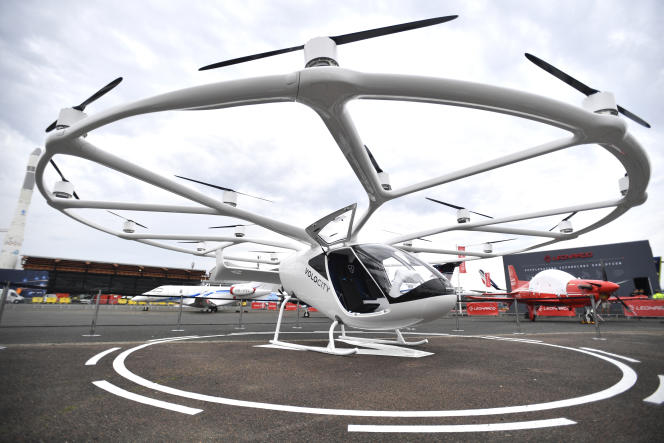Flying taxis are expected to be one of the main attractions of the Paris Olympic Games (OG) in 2024 in terms of mobility. The demonstration of French know-how and technology. Alas, they took a hit to the wing before even taking off. It was the Environmental Authority that struck. The independent body asked Groupe ADP, managers of the Paris airports of Orly, Roissy and Le Bourget, and operator of flying taxis, to review its copy.
At the beginning of September, the independent body issued an unfavorable opinion for one of the circuits that future devices should take, machines with a hybrid look, halfway between the large insect and the helicopter. At the end of a year of tests carried out at the Pontoise vertiport, Groupe ADP, with its partner Volocopter, designer of these drone taxis called VoloCity, has, in fact, determined three lines that will have to be used, during the duration of the Olympic Games, by machines, as well as two “loops”as the airport manager designates them, reserved for tourist first flights.
The three routes lead, for the first, from Roissy-Charles de Gaulle to Le Bourget, for the second, from the Paris heliport, located in Issy-les-Moulineaux, to the aerodrome of Saint-Cyr-l’ École (Yvelines) and, finally, for the third, from the Paris heliport to the vertiport on the Quai d’Austerlitz. Indeed, ADP plans to install a barge on the Seine below the Austerlitz station, to take off and land vertically its drone taxis. This route to the Austerlitz barge will be the only one to bring flying taxis into Paris intramural. To avoid passing over buildings, the drones will have to fly over the Seine to the barge, moored at the foot of the Cité de la mode et du design.
The impact study deemed incomplete
It is this last destination which raised eyebrows of the Environmental Authority, which judged ” incomplete » the impact study of the Paris Vertiport. According to her, and contrary to Groupe ADP’s assertions, drone taxis would make much more noise than advertised. The independent body would have measured them in flight at 65 decibels. Flying taxis are less noisy than helicopters with thermal engines, but cannot be considered silent, contrary to what appears in the file, unless an average thermal motor vehicle is considered silent.indicates the Authority.
When questioned, Groupe ADP indicated that the noise level of drone taxis was measured by the RATP acoustic laboratory. Above all, he adds, the operating noise of future flying taxis, which will operate between 120 and 300 meters above the ground (helicopters fly between 300 and 1,500 meters) would be “hardly perceptible in an urban environment”. Tests carried out over a year in Pontoise aimed in particular to verify, with the Directorate General of Civil Aviation, the integration of this new type of mobility into air traffic.
You have 37.79% of this article left to read. The rest is reserved for subscribers.
